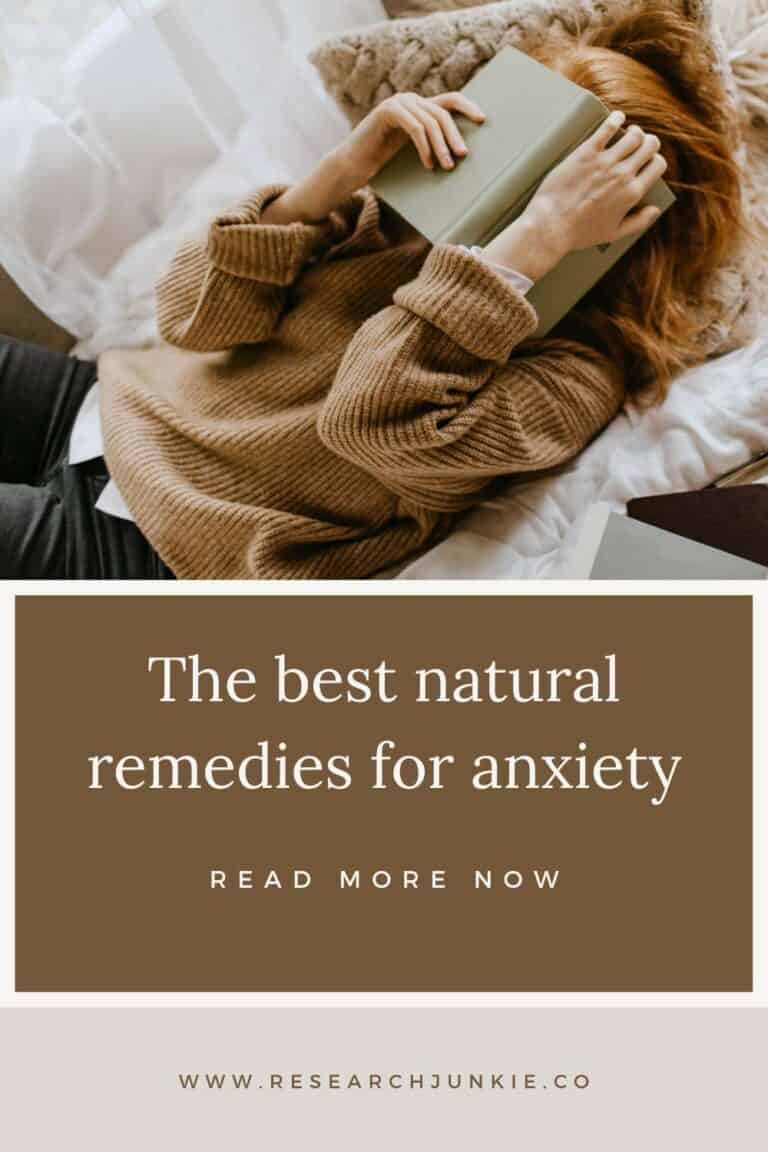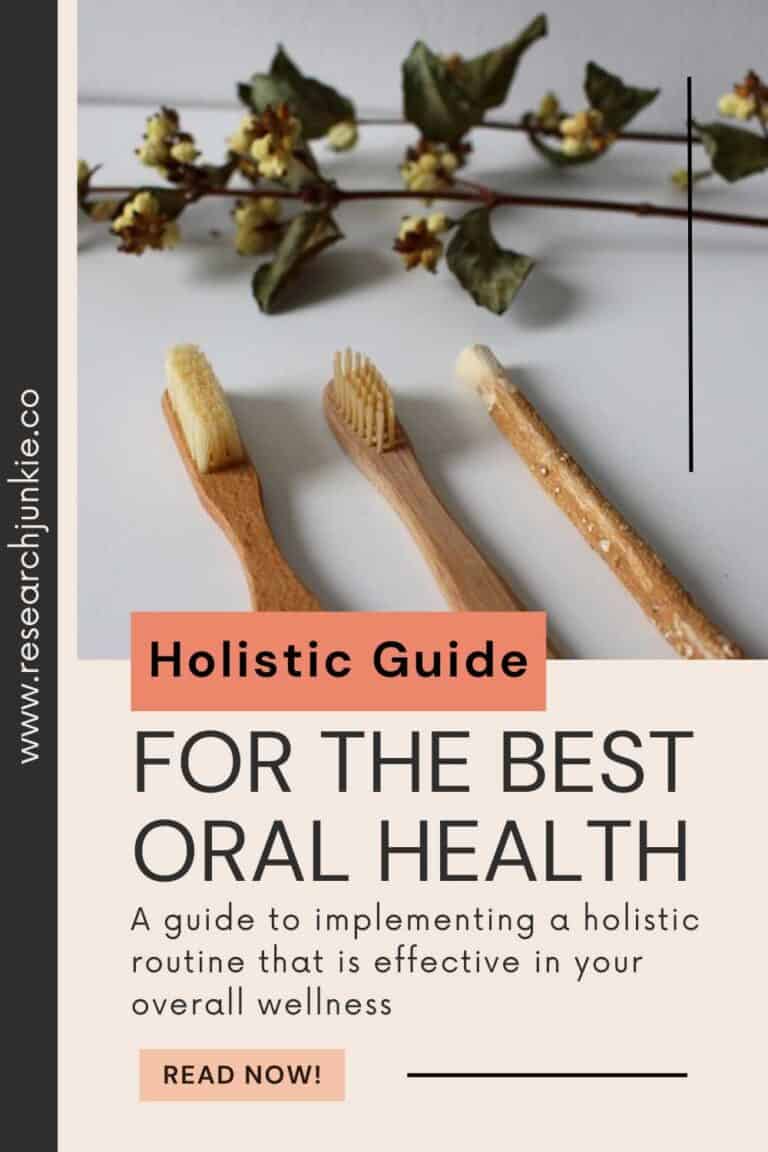How to Embrace a Holistic Lifestyle

Living a holistic lifestyle looks different for everyone. How to embrace a holistic lifestyle is as unique as fingerprints, taking into account all of the beautiful differences that make up our lives. It is a lifestyle that promotes healing and nourishing of your mind to body, and soul. The three most important components.
In this article you will learn how to apply holistic practices to your own life and adopt them in positive and healthy ways that will help to improve your overall well-being.
What is holistic living?
Holistic living can be a healthy and sustainable way of living a balanced life. It involves making intentional choices to care for our mind, body, and soul.
Taking a holistic approach to health, involves seeing the “bigger picture.”
A holistic lifestyle is a mindset and a way of life. Regardless of what you’ve read online, living a holistic lifestyle isn’t about giving up gluten, eating a plant-based diet, and living in a converted shipping container tiny home. Living a holistic lifestyle is about unifying your mental self with your physical self to promote overall wellness. It’s a lifestyle that keeps you in touch with the way your thoughts and attitude impact your physical health and keeps you in touch with nature, whether you eat gluten, fish, beef, or potatoes. It’s not about what you eat – it’s about who you are.
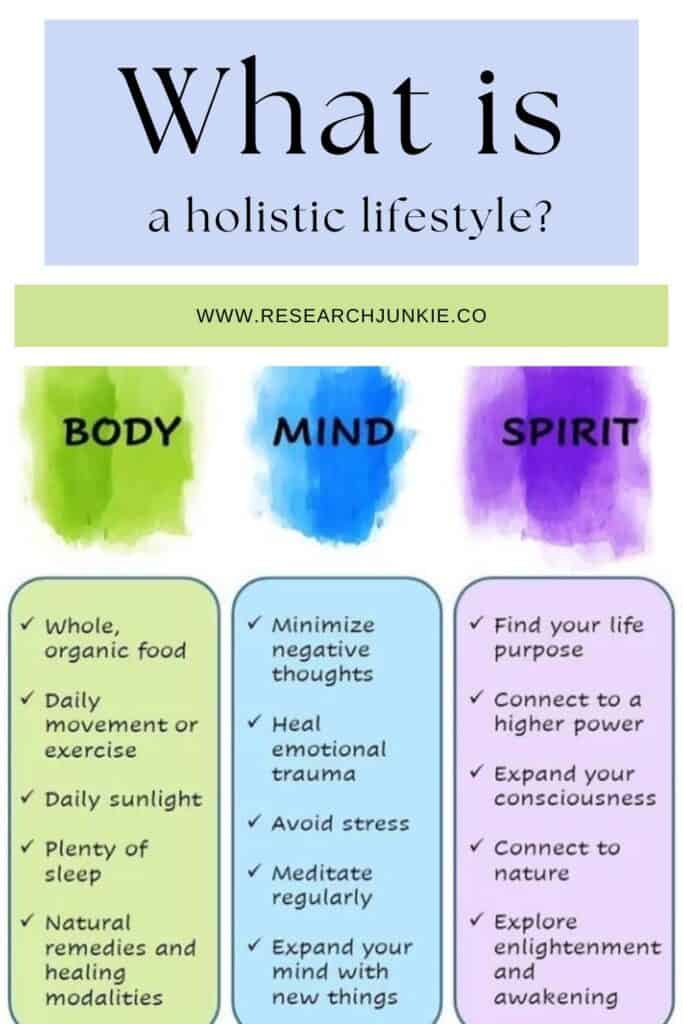
How do you live a holistic lifestyle?
For me living a holistic lifestyle means incorporating certain routines and mindsets daily. Those things include self-care, self-awareness, healthy sustainable habits, education, and personal growth.
Living a holistic lifestyle covers all areas of your life. It can help with the vast majority of physical, mental, financial, and spiritual matters.
Think of it this way: you might be extremely fit and eat only local, organic and sustainable foods, but if you have no friends because you’re a miserable person, and you are always angry and stressed, you’re not likely to be healthy. Happiness, relaxation and a fulfilling job or social role are key to ushering in a complex cascade of hormones that protect your immunity.
An obvious example is cortisol release in chronically stressed or angry people. Extended release of cortisol in the bloodstream causes a host of negative physical effects, and long-term, it contributes to belly fat. Belly fat, in turn, raises your risk of heart disease and diabetes. Breaking the cycle of negative emotions, practicing relaxation and breathing techniques as needed, enjoying happy times with friends or family, and even having a faith practice are all equal in importance to eating and sleeping well and getting enough exercise in holistic health.
Benefits to living a holistic lifestyle
Adopting a holistic lifestyle provides many benefits that lead to better overall wellness for both body and mind while enhancing one’s connection with self and others. Here’s a list of just a few benefits living holistically:
- Improved physical health
- Reduced stress
- Increased energy levels
- Enhanced emotional well-being
- Improved sleep quality
- Greater sense of connection
- Reduced risk of chronic diseases
- Increased productivity and creativity
- Better relationships
- Improved quality of life
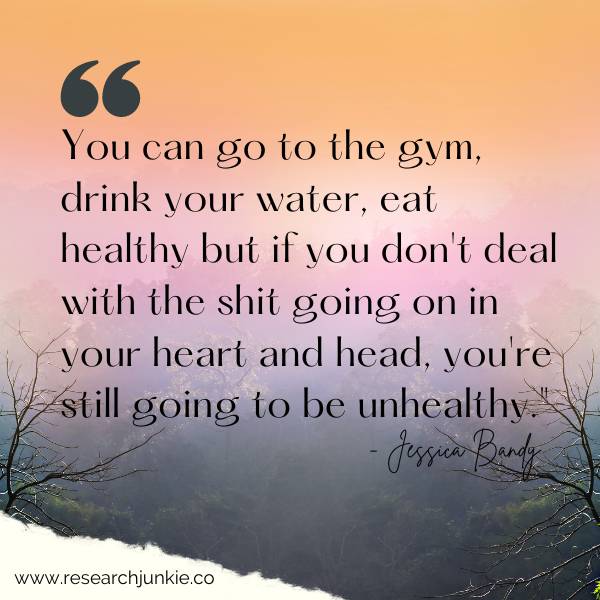
Holistic health focuses on the overall wellness of 8 aspects of life. What are the 8 dimensions of holistic health?
- Physical
- Emotional
- Social
- Spiritual
- Environmental
- Intellectual
- Financial
- Occupational
It takes self-awareness and the ability to move through self-doubt, lack of motivation, and limiting beliefs with courage. It’s so important to reframe your mindset and believe in yourself!! If living a holistic lifestyle was easy, everyone would be doing it.
How to embrace a holistic lifestyle
If you’re a true beginner, don’t worry – it’s easier than you might think to start living a more holistic lifestyle. Let me guide you through the basics!
Natural Body Care:
Your skin is your largest organ. Anything we put ON our skin gets absorbed IN the skin. You wouldn’t put any chemicals or perfumes in your mouth, so we also don’t want to use products containing them.
I suggest you get familiar with the Environmental Working Group (EWG). They’re a group of researchers who constantly provide studies and findings on toxin exposure in consumer goods. EWG also has a companion smartphone app, Skin Deep, that you can refer to when researching the safety of products that you’re considering. You can also download the “Think dirty” app.
Reduce toxins in your home:
Reducing toxins in your home is important for the health and well-being of you and your family. Here are some tips on how to reduce toxins in your home:
- Use natural cleaning products: Switch to natural cleaning products that are free from harsh chemicals, such as vinegar, baking soda, castile soap and lemon juice. These ingredients can be used to clean most surfaces in your home.
- Avoid air fresheners: Many air fresheners contain harmful chemicals that can cause respiratory issues. Instead, try using essential oils or an air purifier to keep the air in your home clean.
- Check for mold: Mold can grow in damp areas of your home, causing respiratory problems and other health issues. Make sure to check for mold regularly and address any issues immediately.
- Choose non-toxic furniture: Some furniture contains toxic chemicals that can release fumes into the air over time. Look for furniture made from natural materials or those labeled as low-VOC (volatile organic compounds).
- Use organic bedding: Conventional bedding often contains synthetic materials that can release harmful fumes into the air while you sleep. Opt for organic cotton or bamboo bedding instead.
- Avoid pesticides: Pesticides can be harmful to both humans and pets if they come into contact with them directly or indirectly through food sources.. Try natural pest control methods like planting herbs around windowsills or using a mixture of water and dish soap to kill insects.
Plant-Based Medicine:
Holistic living simply means that you know when it is appropriate to reach for a natural remedy to cure a common ailment, and when it is appropriate to consult with a physician.
True medicine comes from the earth, not a lab. I will also never trust an industry that is financially dependent on me becoming sick.
Nature is full of incredible healing potential, and some of the most powerful remedies come from plants. By utilizing the therapeutic properties of natural plants, we can support our bodies in powerful ways.
Plant-based remedies have been used for centuries to reduce inflammation, ease pain, improve sleep, and promote relaxation. With so many options available, there’s a natural remedy out there for just about everyone.
“And God said, Behold, I have given you every herb bearing seed, which is upon the face of all the earth, and every tree, in the which is the fruit of a tree yielding seed; to you it shall be for meat.” Genesis 1:29
Here’s a list of some herbal supplements that I consider staples and what they can be used for:
| HERBAL SUPPLEMENT | COMMON USES |
|---|---|
| St. John’s wort | Wild growing with yellow flowers, this herb has been used for centuries in the treatment of mental disorders. Today, it is a popular recommendation for mild to moderate depression. |
| Saw palmetto | Used for urinary symptoms associated with an enlarged prostate gland (also called benign prostatic hyperplasia or BPH), as well as for chronic pelvic pain, migraine, hair loss, and other conditions. |
| Hawthorn | Hawthorn is popularly used for several heart-related conditions and is supportive in the treatment of angina, atherosclerosis, heart failure, and high blood pressure. |
| Green tea | This herb is used to combat fatigue, prevent arteriosclerosis and certain cancers, lower cholesterol, and aid in weight loss. |
| Gingko biloba | Best-known for its ability to boost brain health. Studies say that gingko can treat patients with mild to moderate dementia and can slow cognition decline in dementia and Alzheimer’s disease. |
| Turmeric | According to recent research, turmeric is also showing promise as a treatment for a variety of dermatologic diseases and joint arthritis. It also is beneficial for preventing cancer, stopping DNA mutations, and several skin diseases. |
| Evening primrose oil | evening primrose oil might just be the Swiss Army knife of the medicinal plant world. Oil from this night-blooming, bright yellow flowering plant may be helpful in reducing symptoms of arthritis, premenstrual syndrome (PMS), menopause, inflammation, PCOS, and multiple sclerosis. |
| Tea Tree oil | The tea tree, which is native to Australia, produces an oil that’s long been thought to be beneficial for skin conditions, including mild acne, athlete’s foot, small wounds, dandruff, insect bites, and other inflammatory skin conditions. |
| Echinacea | Often used to strengthen the body’s immune system, echinacea is also considered a prevention against colds and flu. This U.S. native plant is also called the purple coneflower. |
| Garlic | Another powerhouse with loads of benefits. Garlic can be used as a natural antibiotic and can also fight ear infections. It is great for colds and flus and can also be made into a paste with EVOO to help with skin conditions. |
| Ginseng | Used as a general tonic to increase overall body tone, ginseng is considered helpful in elevating energy levels and improving resistance to stress. |
You can also work with holistic medical practitioners. Find one in your area HERE.
Holistic medical practitioners believe that the whole person is made up of interdependent parts and if one part is not working properly, all the other parts will be affected. In this way, if people have imbalances (physical, emotional, or spiritual) in their lives, it can negatively affect their overall health.
Examples of holistic practices are: Aromatherapy, Ayurveda, Reiki, Reflexology, The Bach Flower remedies, etc.
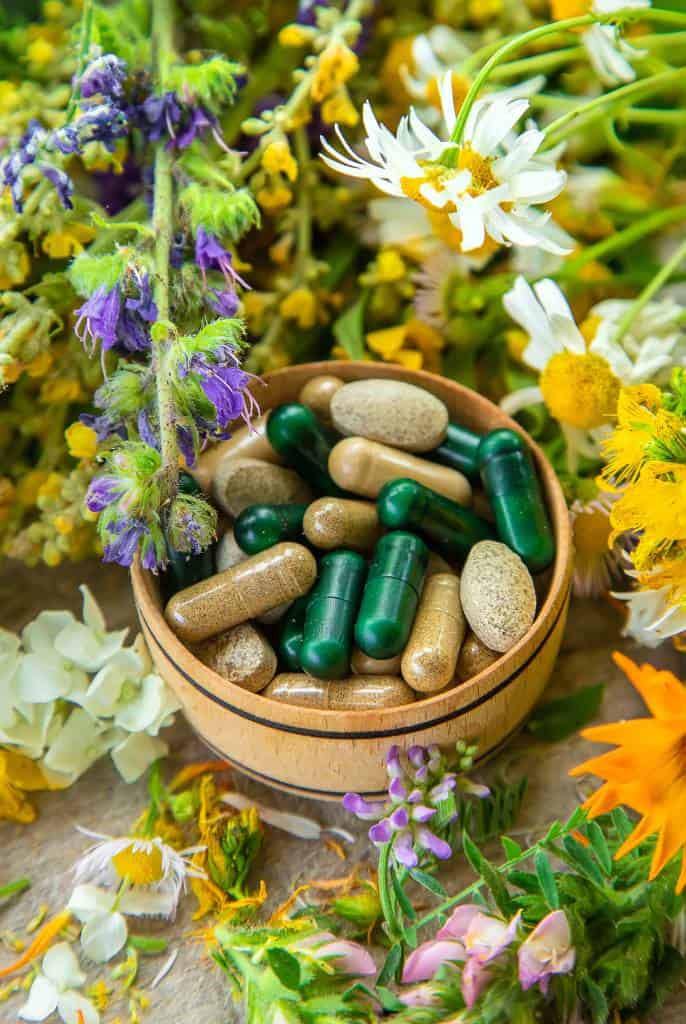
I have dedicated an entire page to cleaner, safe, supplement options. Your health is your greatest wealth. Get a jumpstart on your overall wellness here. If you don’t make time for your wellness, you’ll be forced to make time for your illness.
Mindful Eating:
One of the core principles of holistic living is being mindful of what you put in your body. Start by making small changes to your diet – eat more whole foods like fruits, vegetables, grass fed meats, raw dairy, and grains, and cut out processed and packaged foods. Practice mindful eating by savoring every bite, chewing slowly, and really focusing on the experience of eating.
There are many pesticides that create havoc on our hormones and harm our gut health. Add in prebiotic and probiotic foods. This will enrich your gut microbiome and allow healthy gut bacteria to flourish, which will also impact your mental health.
There are 12 types of fruits and vegetables that contain elevated levels of pesticides, including:

- Strawberries
- Spinach
- Kale, collard and mustard greens
- Nectarines
- Apples
- Grapes
- Cherries
- Peaches
- Pears
- Bell and hot peppers
- Celery
- Tomatoes
You will want to purchase these ingredients organic. Even better from your local farmers market or if you start to learn to grow your own food!
Reduce Stress:
Stress can be a major contributor to a host of physical and mental health problems. Make an effort to reduce stress in your life by engaging in stress-reducing activities like meditation, yoga, and deep breathing exercises.
Stress is a natural/normal human response that triggers the sympathetic nervous system, aka the ‘fight-or-flight’ response. It happens to everyone and is needed to have a healthy/regulated nervous system, because it keeps you alert, motivated and ready to avoid danger.
But stress becomes a problem when stressors continue WITHOUT relief or periods of relaxation via parasympathetic nervous system activation, aka as the ‘rest & digest’ response.
In other words, stress isn’t the problem. It’s the inability, not taking the time, forgetting or not knowing how to regulate your nervous system afterwards.
That’s why you need to find out how you can discharge yourself from that ‘fight-or-flight’ energy and commit yourself to do this after every stressful situation/event or (working) day, helping you to come back into your window of tolerance.
For example: dance, shake, sing, run, consciously breathe, hum or do anything else that helps to release (built up) tension and regulate your nervous system.
The window of tolerance is the zone where intense emotional arousal can be processed in a healthy way, allowing you to function and react to stress or anxiety effectively. It allows you to respond to the demands and stress of everyday life without much difficulty.
Get Plenty of Sleep:
It’s important to get enough sleep to allow your body and mind to recharge. Make sleep a priority by setting a consistent sleep schedule, turning off electronics an hour before bedtime, and creating a relaxing environment in your bedroom.
Add some plants to your nightstand and bedroom to help purify the air and increase the quality of your sleep.
Exercise Regularly:
Movement is important for our physical and mental well-being. Find a form of exercise that you enjoy, whether it’s yoga, jogging, cycling, or dancing, and aim to do it regularly. Exercise doesn’t have to be intense to be effective – even a daily walk can do wonders for your health.
Embrace Nature:
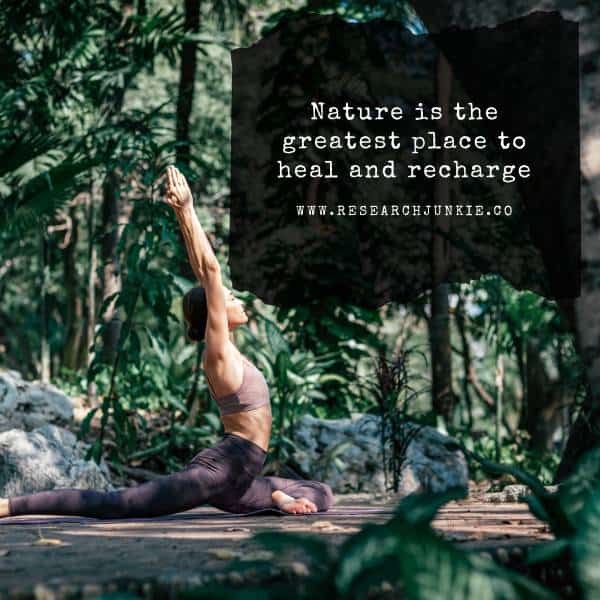
Spending time in nature is grounding and rejuvenating. Even if you live in a city, seek out green spaces like parks or botanical gardens where you can connect with nature. Take walks outside or simply sit and enjoy the beauty around you.
Practice sun gazing while barefoot outside. The idea behind sungazing is that the sun provides many health benefits to the human body and mind. Some proponents of sun gazing believe that it can help with various ailments, including depression, stress, insomnia, and even cancer. Our ancestors knew that gazing directly at the sun during sunrise and sunset has an incredibly beneficial impact on one’s health.
Connect with Others:
It can be especially challenging to connect with people around us – even those we love, after we experience a traumatic event. Even more if you’re naturally a little introverted. But believe me, someone somewhere is waiting to hear your story and say “me too! I know exactly how you feel.” And if you don’t have that someone in your life right now, hit me up!
Connection and community are important for our emotional health. Make an effort to connect with others in meaningful ways, whether it’s through volunteering, joining a club or group with shared interests, or simply spending time with friends and loved ones.
Research and learn:
You are already on the right path if you landed on this article. Researching is how I started on my path to living a more holistic lifestyle. It took intention and time to learn about things that mattered most to me. And here I am now, trying to spread all the knowledge and reach the masses.
Remember that a lot of learning comes from trial and error in your own life. It can be discouraging, but trial and error is part of the process of discovering what works best for your life.
You can even do something as simple as reading more books, watching YouTube videos, or chatting with others. There’s no one-size-fits-all method to education, just like there’s no one-size-fits-all holistic lifestyle.
My favorite resources on how to live a holistic lifestyle:
- The Everyday Ayurveda Guide to Self-Care
- Gut Feelings: Healing the Shame-Fueled Relationship Between What You Eat and How You Feel
- Living Free: A Holistic Health Guide
- Nourishing Traditions
Be conscious of your environmental impact:
Those who live a holistic lifestyle strive to live in harmony with the environment because if we don’t have the environment, we hardly have anything at all. So, we care for our surroundings (being our physical house and our planet) and strive to limit our waste.
Here are some ways to reduce your environmental impact:
- Adopt eco-friendly habits: Choose reusable bags, buy products with minimal packaging or packaging made from recycled materials, recycle as much as possible. Throw out your foil and plastic baggies and use reusable silicone stash bags and parchment paper.
- Go green at home: Plant trees around your home to absorb carbon dioxide from the atmosphere; compost food waste; choose organic foods that have been grown without harmful chemicals; buy sustainable clothing made from natural fibers such as cotton or hemp.
- Use environmentally conscious products: Such as bamboo toothbrushes, non-toxic cleaning products, and other natural alternatives.
Focus on one thing at a time:
You can’t do everything all at once or you’ll make yourself insane. You also won’t be able to make lasting change. Instead, pick one (or just a few) areas of your life that need the most nourishment, and focus on that thing. Remember that even if you select an area of your life that seems like it’s in just one category, it will snowball into more great habits.
For example, if you want to have more energy you might need to create better sleep patterns (body), reduce stress (mind), and control the energy you give to others (soul). Having more energy is still a pretty big topic, so I would encourage you to break bigger topics like these into smaller, bite-sized chunks.
Conclusion
Remember, holistic living is not about striving for perfection or following a rigid set of rules – it’s about finding balance and harmony in all areas of your life. Start by incorporating these basic principles into your routine, and don’t be afraid to experiment and find what works best for you. You’ll be amazed at the positive changes you’ll see in your body, mind, and spirit!
Unlock your true potential
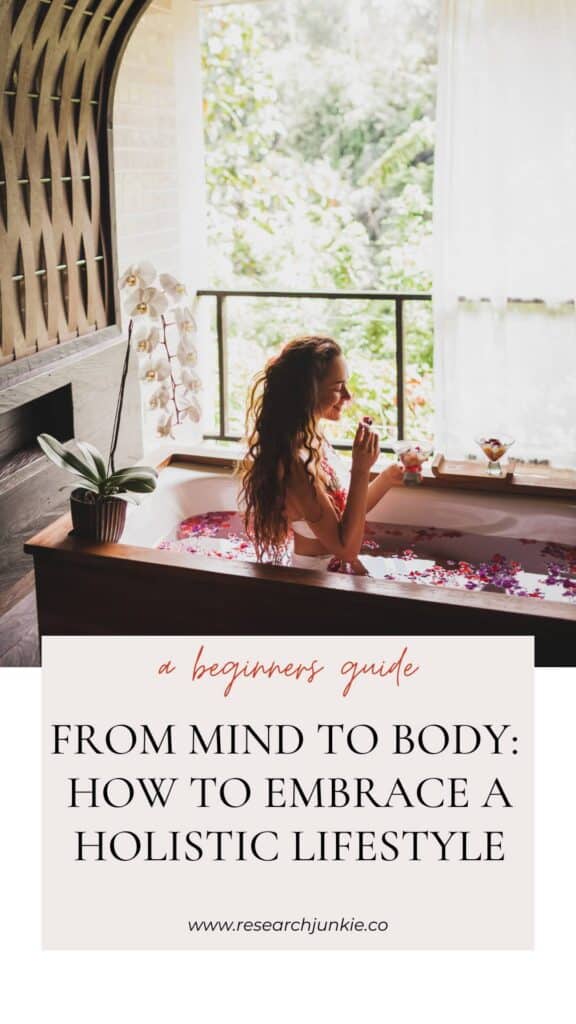
Disclaimer: I am not a doctor or medical professional, and this post should not be taken as medical advice. Please do your own research. Material on this blog is provided for informational purposes only. It is general information that may not apply to you as an individual and is not a substitute for your own doctor’s medical care or advice.
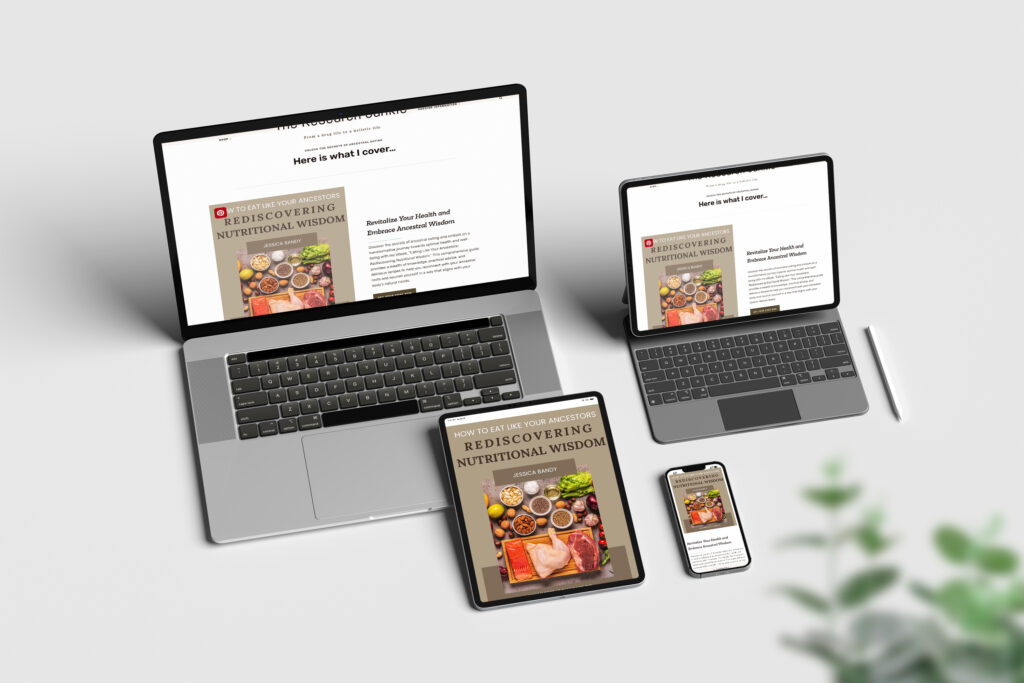
Revolutionize Your Health with Ancestral Eating
Take control of your health and embark on a transformative journey towards optimal well-being. Get your hands on “Eating Like Your Ancestors: Rediscovering Nutritional Wisdom” today and unlock the secrets to vibrant health, delicious recipes, and a lifestyle rooted in ancestral wisdom. Don’t wait another moment – click the button below to start your journey now!


